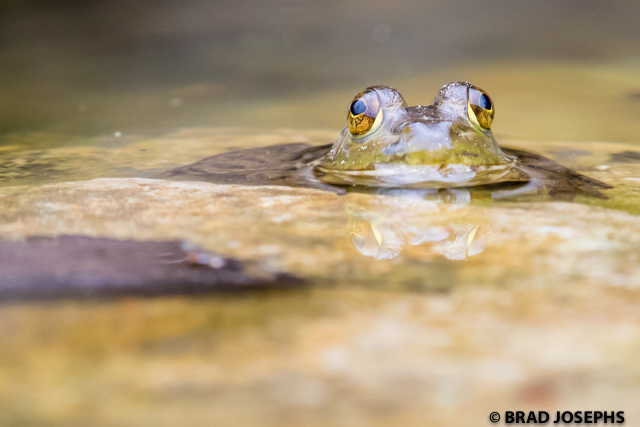
I am excited to see several American Bullfrogs, lithobates catesbeianus, have taken residence in our pond. Bullfrogs are struggling in their native range because of over harvesting by frogleg hunters. One of the cool things about our above-ground pond structure is that I can get nearly eye-level images of the frogs without getting wet or disturbing them.
Last year we built a frog pond next to our house Click here to read about that. Here is a rundown on the first month of spring, which in Arkansas is March. We heard and saw our first frogs of the year in late February (spring peepers and leopard frogs.) This last week has been very busy in the pond, especially at night, and we have recorded a few new species. About a dozen Dwarf American toads started calling a few weeks ago. On the 23rd of March I used a flashlight and got some really cool footage of males calling. Their calls are very impressive in that they last so long! Check out the footage, which includes a slow motion iPhone scene.
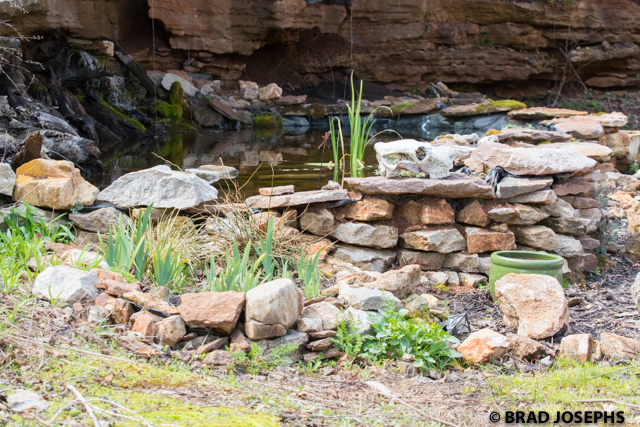
This is a view of the pond in mid March. The frogs can easily get into the pond by jumping up the rocks, and its design seems to make it difficult for predators such as raccoons to hunt them.
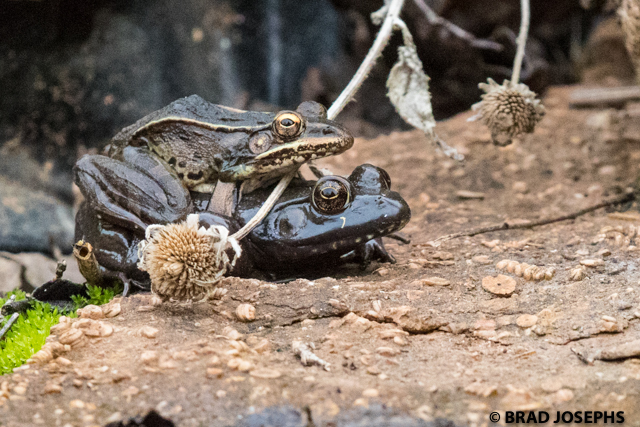
I noticed this leopard frog sitting on a much larger female, which didn’t look quite like a leopard frog. I consulted local frog expert Kory Roberts who told me the bottom frog was a bullfrog. It isn’t mating season for bullfrogs yet, and the two species do not interbreed, so I am quite surprised that she tolerated this guy on her back!
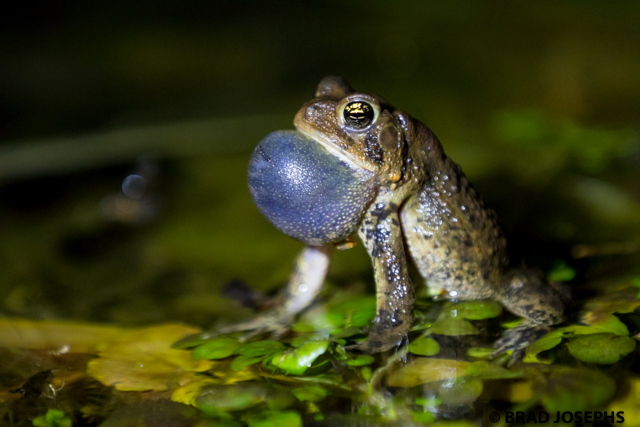
This dwarf american toad sits atop a mat of native watercress that I transplanted from a nearby creek. Toads are terrestrial, except during mating season when they concentrate around permanent water sources so eggs can be laid underwater.
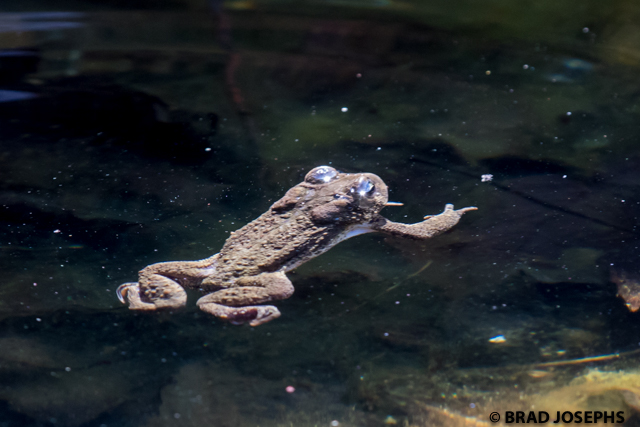
This dwarf american toad is swimming across the pond. You can see the big humps behind the eyes. these are parotoid glands which secrete bufotoxin, which deters predators. My cat was very sick, vomiting for over a day, after encountering his first toad.
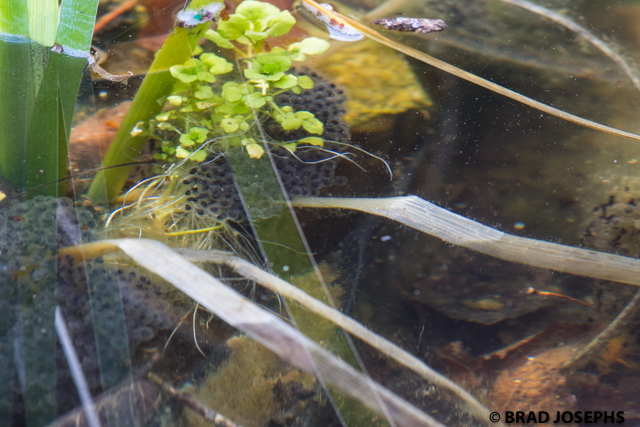
There are numerous gelatinous mats of leopard frog eggs attached to underwater vegetation. The first tadpoles appeared around March 25.
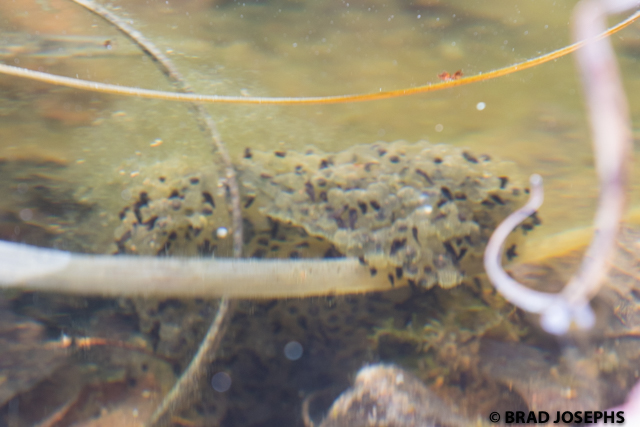
Here is another view of leopard frog egg masses.
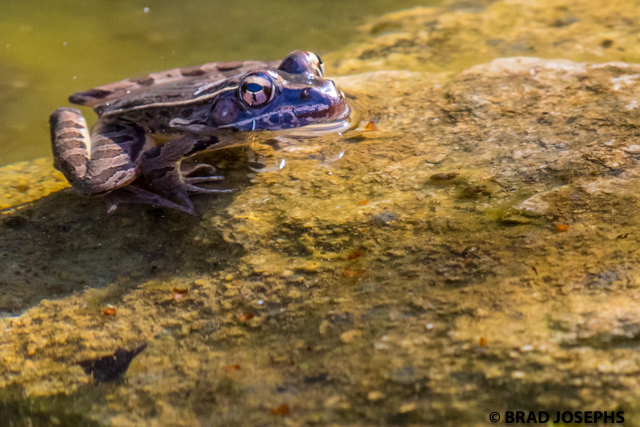
This is a beautiful southern leopard frog sitting on a submerged rock. Their call sounds like grumbling old men.
One of the things I missed the most living in Alaska was the absence of frog calls in the spring and summer. There are a few species of frogs in interior Alaska, including leopard frogs, wood frogs and boreal toads, but they were quite rare in my experience. Constructing a frogpond next to our house near the Buffalo River in north-central Arkansas has been an amazing, satisfying project. On warm days and nights beginning in late February until late summer the chorus is enchanting. Watching new species take residence, and use the pond as a breeding ground makes us feel good because frogs need a lot of help. Every time I go to a hardware store I see the vast collections of poisons, many created by Monsanto, like roundup, and all sorts of pest killers. Amphibians, such as frogs, toads and salamanders, have extremely permeable skin and they absorb these poisons and suffer reproductive failures or death. When you see and hear lots of frogs and toads it indicates that the ecosystem is clean. I beg people to think twice before poisoning their yards to eradicate weeds and pests.
To learn more and become a frog monitor, join a local chapter of frogwatch. Frogwatch USA is a program run by the Association of Zoos and Aquariums. After taking a class by our local chapter, Arkansas Frogs and Toads, my wife and are now both educated advocates and citizen science observers, collecting valuable data on local frog and toad populations. We have also signed up with Amazon Smile so that every time we make a purchase on Amazon, they donate to my local frog watch chapter, Arkansas frogs and toads.
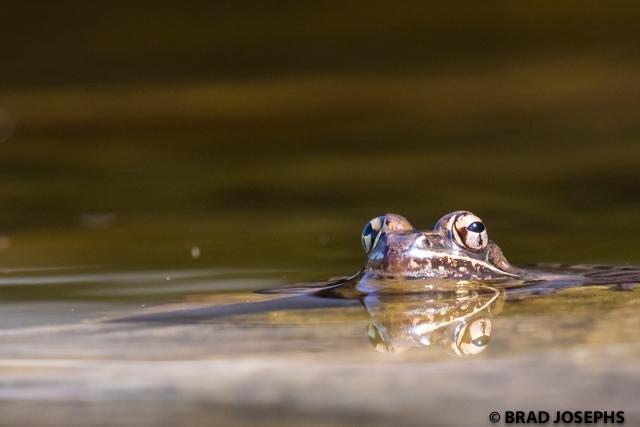

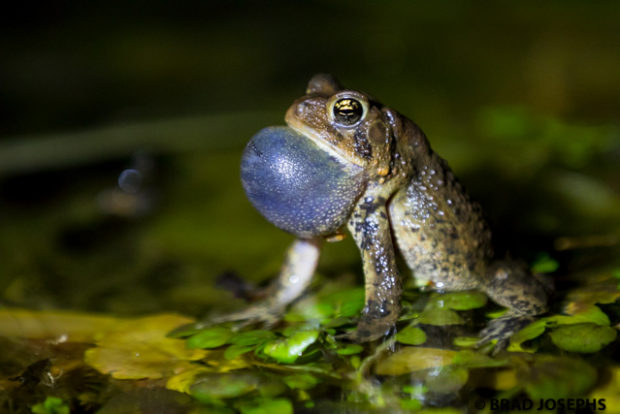

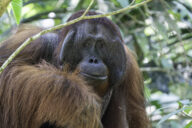
No Comments